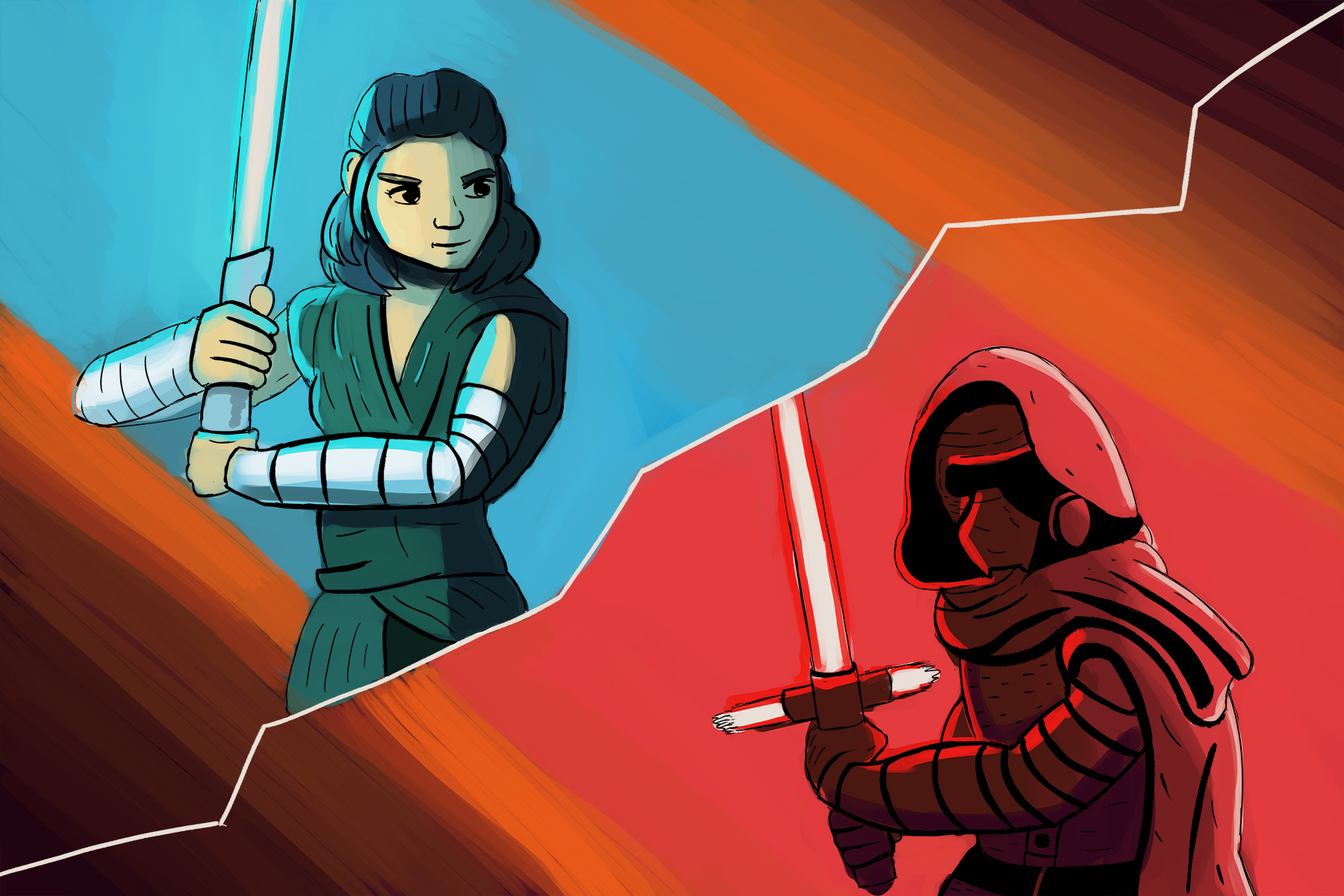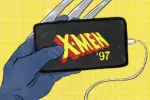Back in 2012, Disney bought the rights to Lucasfilm, allowing the company to gain unlimited access to the ever-profitable “Star Wars” franchise. Later that year, a sequel trilogy of movies was announced, an statement that was polarizing to say the least, considering that there had not been a new addition to the series since “Episode III: Revenge of the Sith” in 2005. Seven years after the Disney buy-out, “Star Wars IX: Rise of Skywalker” was released in December 2019, concluding the final installment in the nine-part Skywalker saga.
Technically, this is not the first time “Star Wars” has closed the curtain on its characters. The inaugural entry, simply titled “Star Wars” (commonly referred to as “Episode IV: A New Hope”) came out in 1977, but subsequently ended in 1983 upon the release of “Episode VI: Return of the Jedi.” Overall, the films were incalculably popular, and the merchandise sales reflected that. However, rather than immediately create more fodder for the silver screen, the “Star Wars” universe primarily expanded with books and comics.
Eventually, series creator George Lucas would make another trilogy of movies set decades before the original films. This prequel trilogy, composed of “Episode I: The Phantom Menace,” “Episode II: Attack of the Clones” and “Episode III: Revenge of the Sith,” received mediocre reviews from critics and enraged fans for decades due to its emotionless character interactions, alterations to the original story and poorly conceived plot. If any good came about from the prequels, Lucas’ advancements in technology provided the filmmakers with the ability to create more spectacle — but that’s about it.
From 2012 to 2015, the time span between the announcement of Disney’s decision to reboot “Star Wars” and the release of “The Force Awakens,” franchise fans passionately debated and speculated about what was to come, but worried nonetheless about how the films would turn out; the prequels were still somewhat fresh on everyone’s minds. Despite countless fan theories, worldwide support and global hate, the first entry into the sequel trilogy debuted on Dec. 18, 2015, a day that kicked off one of the most infamous cinematic events of the 2010s.
Episode VII: The Force Awakens
Release date: Dec. 18, 2015
Director: J.J. Abrams
Arguably, the most intriguing aspect of the rollout for “The Force Awakens” was probably its main cast, which was made up of, at the time, relatively unknown actors like Daisy Ridley, John Boyega and Adam Driver. Nevertheless, several familiar faces from the original trilogy returned, with Harrison Ford and Carrie Fisher reprising their roles as Han Solo and Leia Organa respectively.
Admittedly, the plot line for “Episode VII” is highly reminiscent of “A New Hope,” but by employing such a similar storyline, Abrams re-welcomed fans (who are notoriously picky) into a universe that felt like home, offering everyone a little bit of everything. Conversely, “The Force Awakens” packed enough surprises to claim an identity of its own and introduced Rey (Ridley) and Finn (Boyega) in a manner that capitalized on the franchise’s old-school charm.
Generally speaking, this promising introduction was liked by fans and critics alike. Ridley, Boyega and Oscar Isaac (who played the intrepid Resistance pilot, Poe Dameron) showcased some fantastic chemistry, and Driver stood out from the pack due to an incredible performance as Kylo Ren. Furthermore, the older generation returned like they’d never left. The story appropriately adapted the original trilogy to this subsequent set of films, and plot points that went unanswered felt rich enough to be fleshed out in the following movies. Hope and optimism were alive.
Episode VIII: The Last Jedi
Release date: Dec. 15, 2017
Director: Rian Johnson
And then, there was controversy. Helmed by Rian Johnson, who previously directed the time-travel thriller “Looper” and a handful of stand-out episodes of “Breaking Bad,” “The Last Jedi” was praised by critics, but fans were radically divided. Three years later, you would be hard-pressed to locate lukewarm (no pun intended) admirers of “The Last Jedi” on the internet; people either love it or hate it.
With “The Force Awakens,” Abrams devoted the majority of his sequel trilogy’s story to serve as a springboard for the next two films, but Johnson dropped everything that had been set up for him. He made the film according to his vision.
Until that point, the franchise chiefly relied on large-scale storytelling and incredible fight scenes. Johnson, however, centered his film on the characters rather than intergalactic conflict, and even though “The Last Jedi” takes place in the middle of an interstellar war — full of space combat and salt planet skirmishes — the film decides to focus on developing characters.
By venturing down this route, Johnson erased all of the mysteries present in “The Force Awakens.” Killing off the looming, shadowy antagonist Supreme Leader Snoke without any sort of development, depicting Luke Skywalker as a cynical curmudgeon and revealing the secret behind Rey’s parentage to be literally nothing dismayed fans who favored the conventional storytelling of the past seven “Star Wars” movies.
Episode IX: The Rise of Skywalker
Release date: Dec. 20, 2019
Director: J.J. Abrams
Coming off the heels of Johnson’s divisive opus, fans and critics have been very open about their dislike for “The Rise of Skywalker” and understandably so. It’s hard to picture what the final film in the “Star Wars” sequel trilogy could have been had it not undergone significant redirection before opening in December 2019.
To start, Colin Trevorrow, the director of “Jurassic World,” was slated to conclude the sequel trilogy, but exited the film due to cited “creative differences.” He was then replaced by J.J. Abrams. To make matters worse, the unfortunate passing of Carrie Fisher allegedly disrupted the plans for “Episode IX,” forcing Abrams and Chris Terrio to re-work the script previously penned by Trevorrow and Derek Connolly. This inconsistency of creative leadership really made this film suffer.
It’s not hard to see why some fans interpret “The Rise of Skywalker” as Abrams atoning for “The Last Jedi” due to its overindulgence in nostalgia. Akin to the finale of the original trilogy, “The Rise of Skywalker” tangibly mirrors “Return of the Jedi” in almost every way possible, a strategic move that implies that Abrams might have felt lost in his writing process.
Due to Snoke’s untimely demise, Abrams revived Emperor Palpatine, the villain from the original trilogy, an unavoidably forced reveal, which is further accompanied by little-to-no explanation as to why Palpatine would still be alive, especially taking his death in “Return of the Jedi” into account.
In the end, the sequel trilogy received mixed reviews, a recurring theme throughout the five-year reign of Disney’s “Star Wars” saga. Although it is frustrating that the power-hungry corporation spent $4 billion on Lucasfilm without a pre-ordained plan to abide by, “Star Wars” fans were able to experience a trilogy of movies that are, at the very least, fun and will continue to be debated for years to come.
















